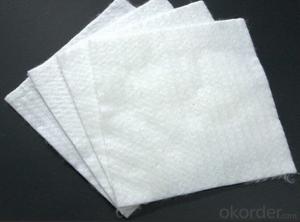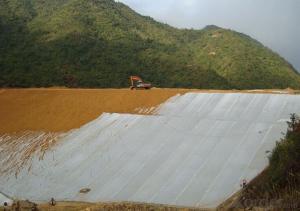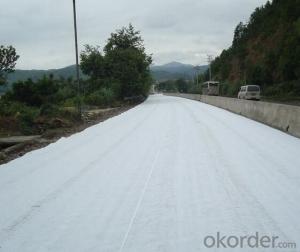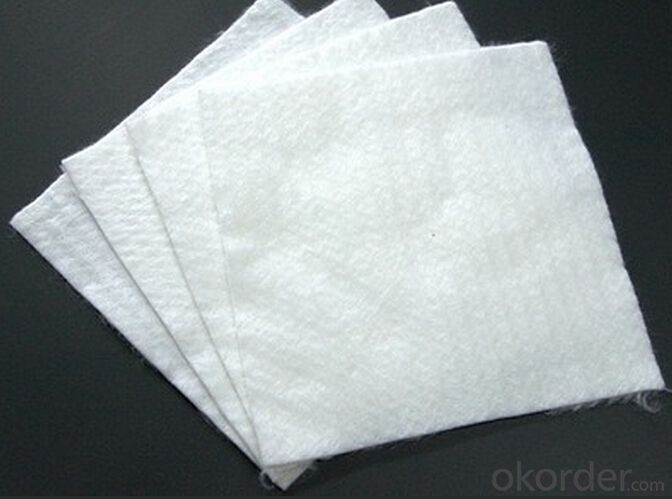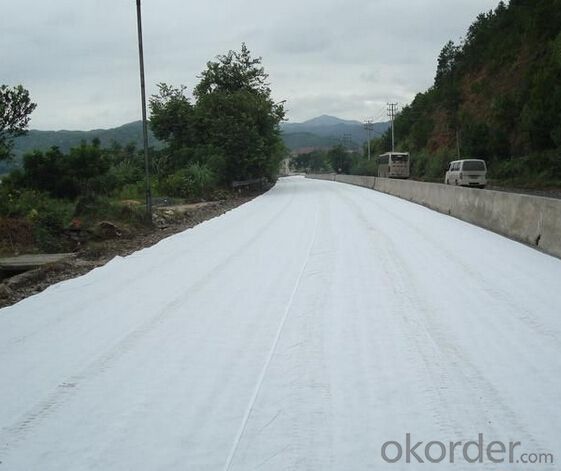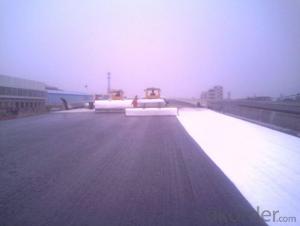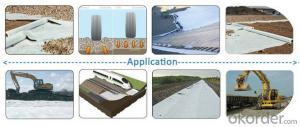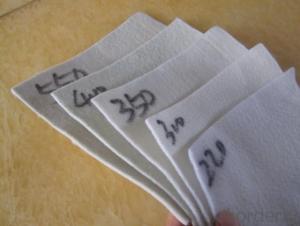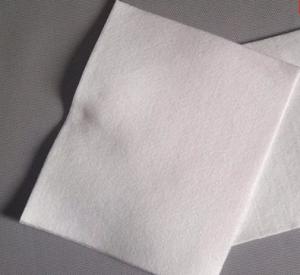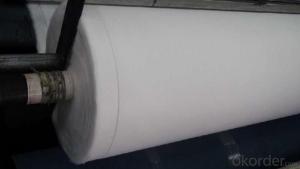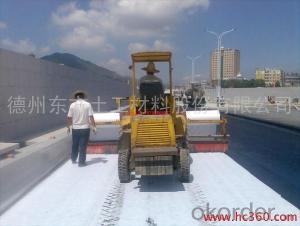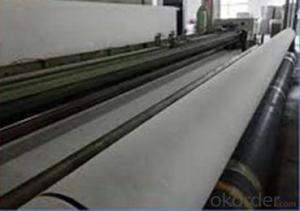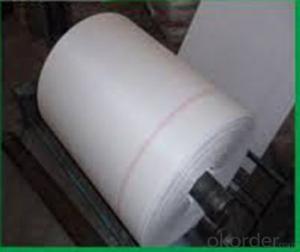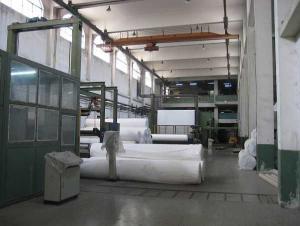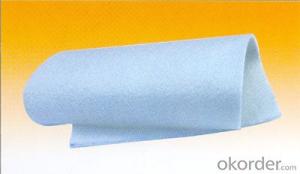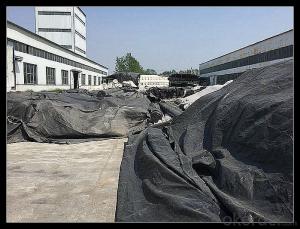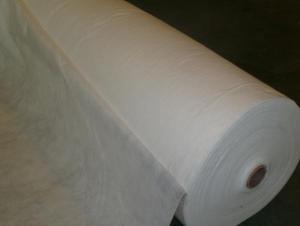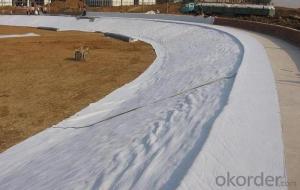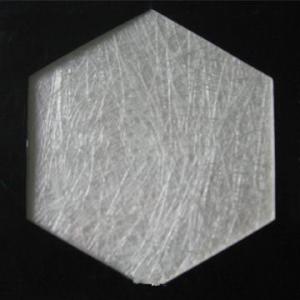Non Woven Geotextile Home Depot Polypropylene Needle Punched Geotextile for Road
- Loading Port:
- China main port
- Payment Terms:
- TT OR LC
- Min Order Qty:
- 30000 m²
- Supply Capability:
- 300000 m²/month
OKorder Service Pledge
OKorder Financial Service
You Might Also Like
1,Brief Introduction of Polypropylene Staple Fiber Geotextile
Material:Polypropylene
Weight:100~800g
Width:1~6m
Length:30~100m;or as your request
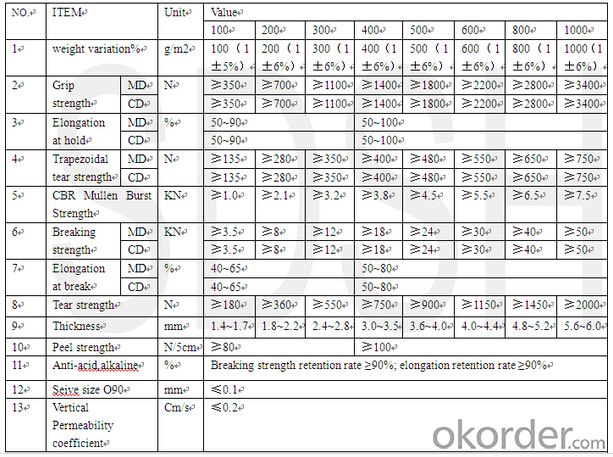
2,Feature of Polypropylene Staple Fiber Geotextile
Good flexibility,permeability,filtration,separation and easy for construction,acid-proof, alkali-proof, sun-proof, mildew-proof and worm-proof. excellent water permeability, high tensile strength and shock strength, non-toxic and harmless.
3,Package of Polypropylene Staple Fiber Geotextile
Packed in rolls or as per your request
4,Application of Polypropylene Staple Fiber Geotextile
Used in the area of highway, airport, railway,dam, reclamation for filtration, separation drainage and protection. Our product can be used to keep soil from losing, collapsing, shocking and stable the base. Because of good wind resistant and frost resistant, the geotextile can also be used as protection of trees in winter.
5.FAQ
We have organized several common questions for our clients,may help you sincerely:
1>How about your company?
A manufacturer & supplier focuses on the production of geo textile and geo bag etc. We have exported this product to Amereica, Europe and South East Asia. Customized product is also available based on your detailed requirements.
2> What's the MOQ ?
We kindly recommend 1x40'HQ as the price would be economical based on large loading quantity.
3>How long can we receive the product after purchase?
It takes about 1 to 2 weeks to finish the production based on the specific production schedual. Then it will depend on the shipping time from loading port to the destination port.
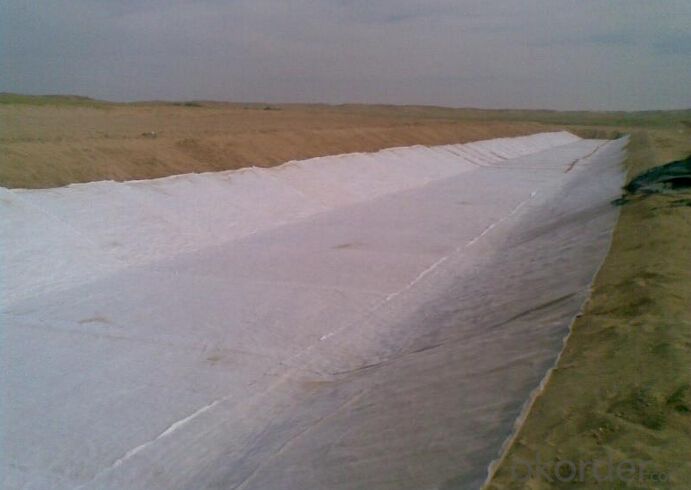
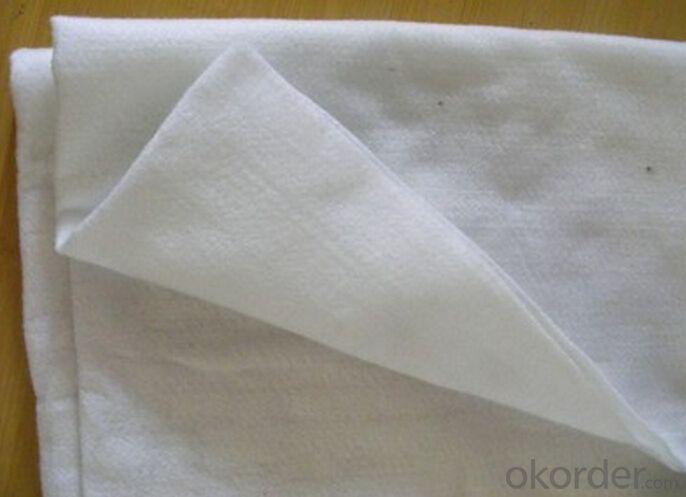
- Q: Geotextile lap joint with special equipment? How is the price
- Geotextile stitching is a professional equipment, professional equipment name for the portable sewing machine, the price is cheaper, generally ranging from 100-300 yuan. Look like this:
- Q: What are the uses of acupuncture geotextiles?
- Hello! You said there are two, the first is staple acupuncture non-woven geotextile, it is widely used in railways, highways, sports grounds, dam dams, water and soil construction, tunnels, coastal beaches, reclamation, environmental protection projects! The second is filament spunbonded acupuncture non-woven geotextile, which is widely used in the bottom of the landfill site, slope, closure of the reinforcement and protection, water conservancy project dam dam and slope of the filter, channel Isolation, seepage, road, rail, airport runway foundation isolation, filter ~ drainage! Soil slope, retaining wall and road reinforcement ~ drainage, port engineering soft foundation treatment, beach reclamation, port terminals and anti-slope reinforcement ~ drainage! I hope to help you, specializing in the production of geotechnical materials to answer!
- Q: What are the different geotextile durability test methods?
- There are various geotextile durability test methods including accelerated aging tests, puncture resistance tests, tensile strength tests, and exposure to environmental conditions such as UV radiation and chemical exposure. These tests help assess the long-term performance and durability of geotextiles in different applications.
- Q: Can geotextiles be used in green infrastructure projects?
- Yes, geotextiles can be used in green infrastructure projects. They are often employed to promote healthier soil conditions, prevent erosion, manage stormwater runoff, and enhance the overall sustainability of green infrastructure systems. Geotextiles can be utilized in various applications such as erosion control blankets, sediment filters, retaining walls, and vegetated roofs, making them an essential component in the implementation of green infrastructure practices.
- Q: How do geotextiles affect soil temperature?
- Geotextiles can help regulate soil temperature by acting as an insulating layer. They can reduce heat loss during colder months and prevent excessive heat absorption during hotter months, thus creating a more stable and favorable temperature for plant growth.
- Q: What are the specifications for geotextiles in gas venting projects?
- The specifications for geotextiles in gas venting projects typically include factors such as the required permeability, strength, and durability. The geotextile should have a high porosity to allow efficient gas flow while preventing the passage of fine particles. It should also possess sufficient tensile strength and puncture resistance to withstand installation and long-term exposure. Additionally, UV resistance and chemical compatibility with the surrounding environment are crucial considerations to ensure the geotextile's longevity and performance in gas venting projects.
- Q: Can geotextiles be used in geosynthetic clay liner applications for containment systems?
- Yes, geotextiles can be used in geosynthetic clay liner applications for containment systems. Geotextiles are often used as a component in geosynthetic clay liners to enhance their performance by providing additional reinforcement, filtration, and separation functions. They help to improve the overall stability, filtration, and hydraulic properties of the liner system, making it an effective solution for containment applications.
- Q: Geotextile strength index with interpolation method how to calculate? Then geotextile variation, I do not quite understand, pro, if you know whether to tell me Oh! Very anxious
- Geotextile strong indicators of the interpolation method: For example: geotextile 150 grams of breaking strength is 4.5KN, geotextile 100 grams of breaking strength is 2.5KN, then the geotextile 130 grams of broken strength is how much? The calculation method is: 4.5KN-2.5KN = 2KN (that is, 50 grams of geotextile strength) 2KN by 50 grams multiplied by 30 grams is equal to 1.2KN then geotextile 130 grams of breaking strength is 3.7KN.
- Q: Can geotextiles be used in geogrid reinforced soil walls?
- Yes, geotextiles can be used in geogrid reinforced soil walls. Geotextiles are often used as a separation and filtration layer between the soil and the geogrids in order to prevent soil migration and maintain the integrity of the reinforced wall structure.
- Q: Can geotextiles be used in the protection of underground tanks?
- Yes, geotextiles can be used in the protection of underground tanks. Geotextiles are often used as a protective layer in tank installations to prevent damage from sharp objects, provide a barrier against soil contaminants, and help with drainage and filtration.
Send your message to us
Non Woven Geotextile Home Depot Polypropylene Needle Punched Geotextile for Road
- Loading Port:
- China main port
- Payment Terms:
- TT OR LC
- Min Order Qty:
- 30000 m²
- Supply Capability:
- 300000 m²/month
OKorder Service Pledge
OKorder Financial Service
Similar products
Hot products
Hot Searches
Related keywords
